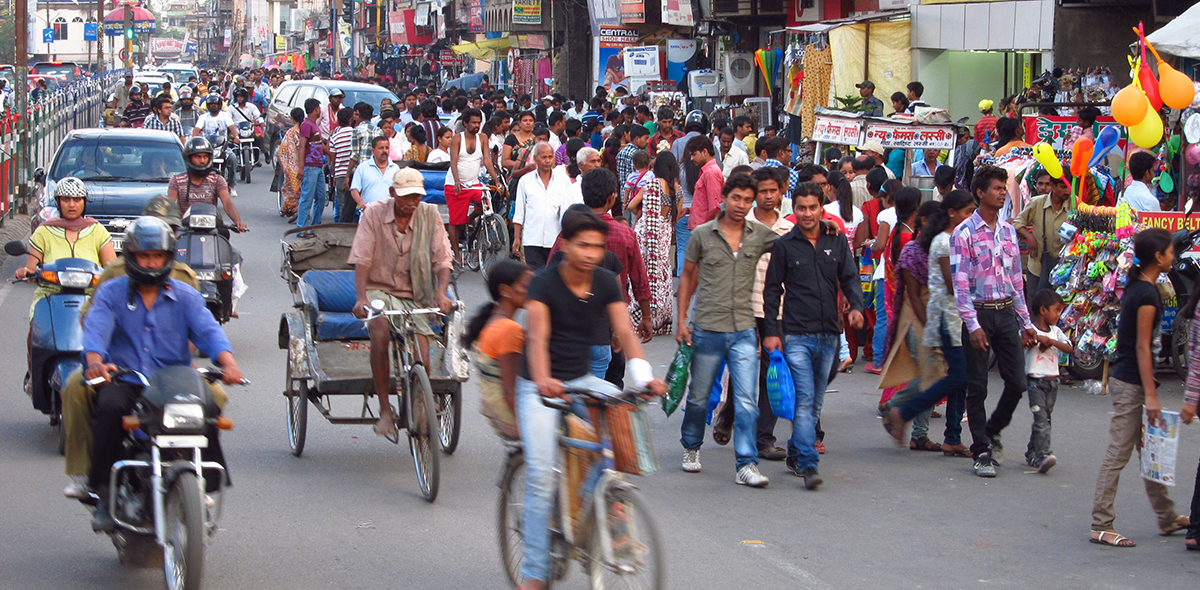Ranchi, capital of Jharkand- one of India’s youngest states, is taking incredible strides to transform itself into a livable, healthy, and sustainable city in a very short span of time. With focus on improving the quality of life for its citizens, Ranchi is embracing people-centric planning practices including strengthening public transport services, implementing a progressive parking management system and adopting transit-oriented development principles for urban planning. These efforts were reflected in the city’s Smart City Proposal (SCP), which was selected in the fast-tracked second round of India’s Smart City Mission in May 2016.
Originally, Ranchi was not among the first twenty cities to be selected under the Smart City Mission. The proposal, which selected a greenfield development with focus mainly on drinking water, sanitation, sewage and solid waste management, failed to address the challenges of urban mobility posed by Ranchi’s rapidly growing urban population.
Until recently, the city’s transport problems were on the back burner. Although half of all the trips in the city are made on foot or cycle, footpaths and cycling lanes are almost non-existent. In the absence of a formal bus service, high polluting and unsafe informal paratransit caters to two thirds of all the motorised trips. Further, the limited financial capacity of the Ranchi Municipal Corporation (RMC) has been a major hindrance in changing the status quo.
However, in mid 2015, the city began to take its first steps towards a sustainable transport transformation. RMC assumed responsibility of overseeing city bus operations and is working towards expanding and improving the service. The city has also initiated the process to adopt a progressive parking policy to tackle traffic congestion. To test the policy, the city is working towards implementing priced parking on a heavy traffic commercial zone. The parking prices, which are pegged to parking demand, are approximately four times higher than the current rates. Building on these initial steps, Ranchi’s revised SCP, improved with technical inputs from ITDP, embraced multiple sustainable transport initiatives.


Caption:The rendering (above) shows the proposed design of a major intersection, Albert Ekka Chowk (existing photo), on the Main road in Ranchi—with all elements of a complete street.
Over the next five years, Ranchi aims to increase its modal share of public transport to 50% by expanding its bus fleet by more than five times—from existing 65 buses to almost 375 buses. An intelligent traffic management system will help improve efficiency and service of its bus fleet. Further, to provide comfortable access to its public transport and encourage walking and cycling in the city, Ranchi aims to redesign 31.5 km of its streets as ‘Complete Streets’ with wide, safe and continuous footpaths, safe crossing facilities, clearly demarcated parking bays, and uniform carriageways.
The greenfield area based development is proposed to adopt a transit-oriented development (TOD) approach with dense, mixed-use neighbourhoods planned along frequent, fast, and reliable high capacity mass transport lines. The smart city proposal reinforces the city’s intention to curb private vehicle use by managing parking through market-based pricing.
With definite funding from the national and state governments towards these tangible improvements planned in the city, Ranchi is en route to transforming itself into a sustainable and equitable city. ITDP is a proud partner to the city in its mission to embrace this bright future.












